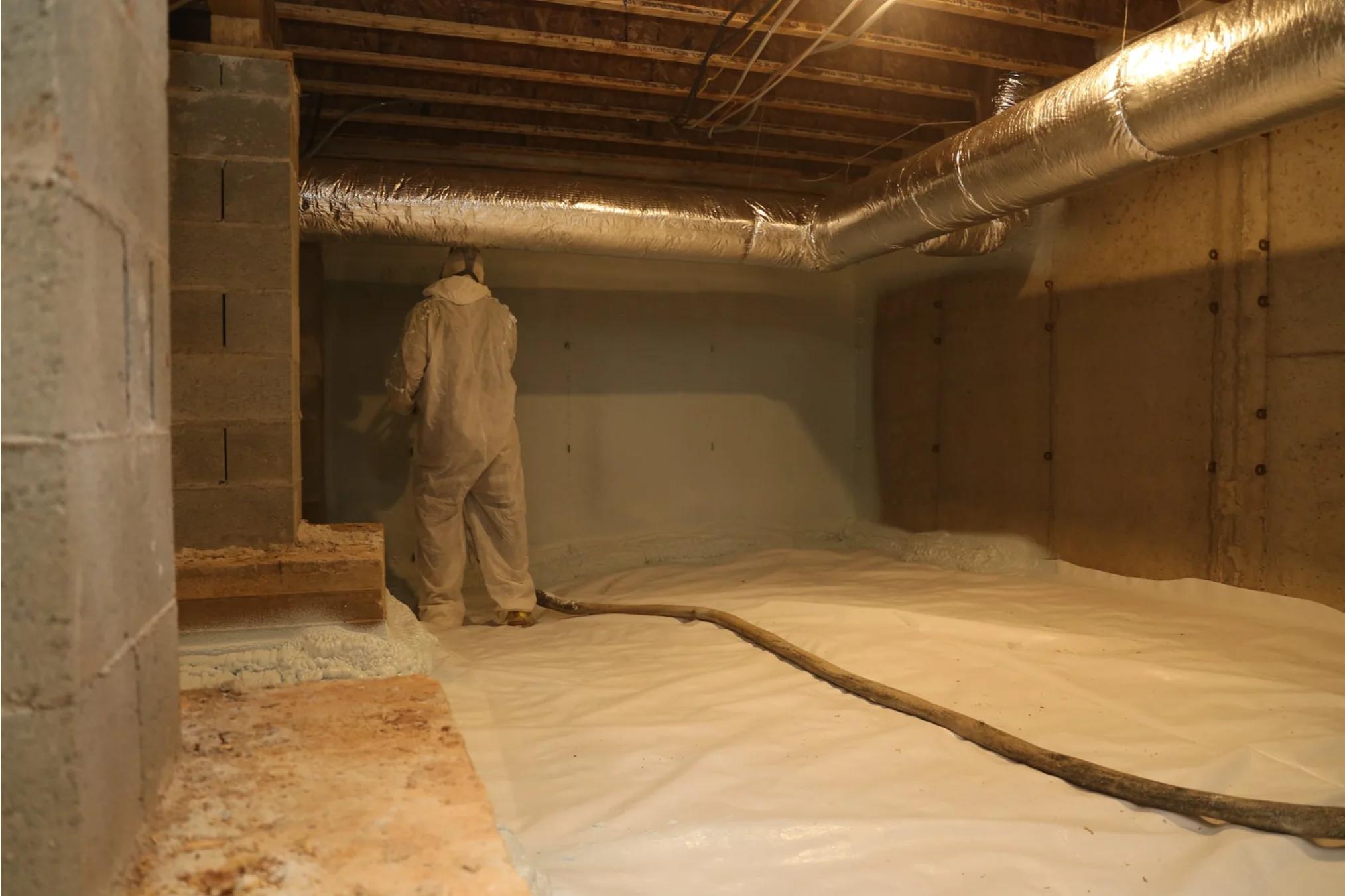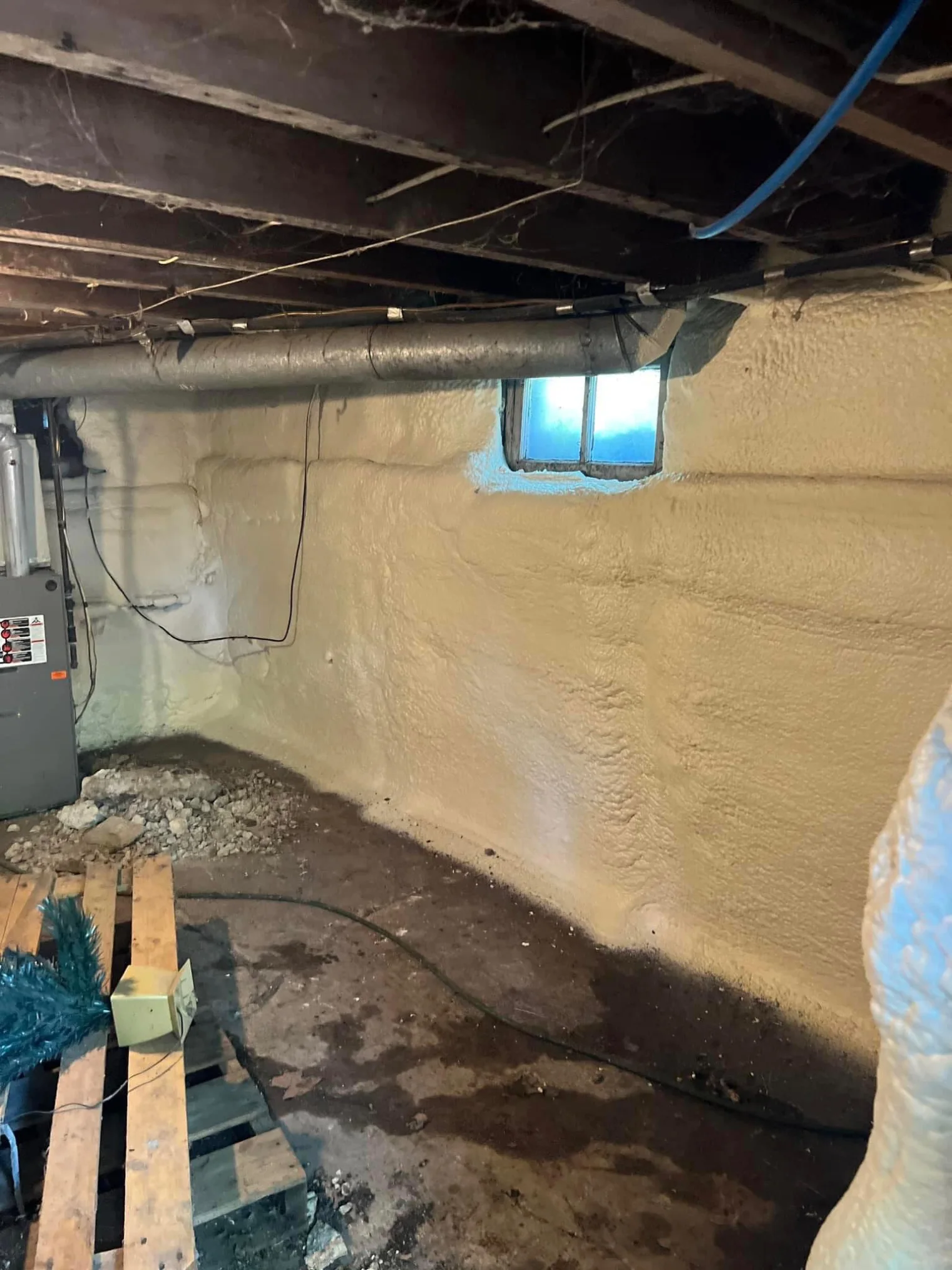
Spray foam insulation can reduce moisture and mold in basements by sealing gaps that allow humid air to enter. This prevents condensation on cold surfaces and blocks water vapor infiltration. Closed cell spray foam is particularly effective due to its moisture-resistant structure. Unlike traditional insulation, spray foam forms a continuous air and vapor barrier.
Air leakage is a primary factor behind mold and dampness in basements. When warm, moist air contacts cool basement walls, it condenses, creating conditions for mold. By eliminating these entry points, spray foam changes the moisture dynamics inside the space. Ozark Eco Foam uses this approach in moisture-prone environments where standard insulation materials have failed.
This article provides a clear breakdown of how spray foam impacts basement moisture levels, technical characteristics to evaluate, material comparisons, and region-specific insights. The information is based on field experience across residential and agricultural properties.
Most basement moisture comes from uncontrolled air movement, not water leaks. In areas like Kansas and Missouri, seasonal humidity increases the risk. Crawl spaces and rim joists are typical entry points. Spray foam insulation eliminates these air gaps, reducing condensation potential.
Closed cell spray foam has a permeability rating under 1.0 perm at 2 inches, qualifying it as a Class II vapor retarder. This limits the movement of water vapor from the soil or humid air into the basement interior.
Mold needs moisture and organic material. Spray foam contains no food source and does not absorb water. In contrast, fiberglass can trap moisture and dust, both of which support mold growth.
In humid basements, combining closed cell spray foam with a dehumidifier creates an environment where mold cannot survive, even during seasonal humidity spikes.
| Feature | Closed Cell Spray Foam | Open Cell Spray Foam | Fiberglass Batt |
|---|---|---|---|
| Vapor Permeability | < 1 perm (Class II) | ~10 perms (Not a vapor barrier) | >30 perms (Not a barrier) |
| Water Absorption | Low | Moderate | High |
| Mold Growth Potential | No food source, inert | No food source, inert | High (organic dust and moisture retention) |
| Air Sealing Capability | Complete seal | Moderate | Poor |
| Insulation Value per Inch (R) | R-6.5 to R-7 | R-3.5 to R-4 | R-3.2 to R-3.8 |
In the Midwest, summer humidity and poorly ventilated basements are common. Homes built before 1980 often lack vapor barriers and proper air sealing in lower levels. Spray foam corrects these oversights by sealing foundation walls, rim joists, and underfloor areas.
Buildings with block or stone foundations benefit from closed cell foam as it strengthens surfaces and limits moisture transfer. For newer concrete walls, spray foam pairs well with air-sealed framing and rigid foam layers.
| Insulation Type | Class of Vapor Retarder | Mold Resistance | Water Absorption (24 hrs) | Adhesion to Substrate | Compressive Strength |
|---|---|---|---|---|---|
| Closed Cell Spray Foam | Class II | High | <2% | Excellent | 25 psi |
| Open Cell Spray Foam | Not classified | High | ~20% | Good | ~5 psi |
| Fiberglass Batt | None | Low | >50% | Poor | N/A |

Installers must not apply spray foam to visibly wet surfaces. Waiting for full drying or using a drying agent is necessary for proper adhesion.
Ozark Eco Foam provides several services that directly support moisture control in basements:
Focus on the foundation walls, rim joists, sill plates, and underfloor areas above crawl spaces. Avoid insulating with moisture-trapping materials like fiberglass.
Yes, but only after the surface is dry and free of loose debris. Closed cell foam bonds well to concrete and block.
Not if closed cell spray foam is used at 2 inches or more. It functions as a vapor retarder.
Walls are the priority for moisture control. Ceilings can be addressed for soundproofing or temperature control.
Spray foam can be a reliable solution to reduce basement moisture and prevent mold if used in the right way. Start by checking wall conditions, drainage, and the intended use of the basement. Closed cell spray foam works best in damp environments. The right application and thickness make the difference.
Ozark Eco Foam helps property owners improve basement conditions by using moisture-resistant spray foam systems. Reach out to discuss insulation needs specific to your building type and location. Contact ozarkecofoam@gmail.com or call (417) 572-5893 to speak with a technician.
Closed cell spray foam has a lifespan of 30–50 years when applied correctly and protected from UV exposure.
Yes. For example, rigid foam or mineral wool can be added over spray foam for added thermal resistance.
No. Once cured, closed cell foam remains dimensionally stable and does not absorb moisture.
No. It does not sag, shift, or settle. Visual inspection is recommended every few years to confirm no structural or moisture intrusion issues.
Not if the walls are dry and vapor control is considered during application. Installers should assess all substrates before installation.